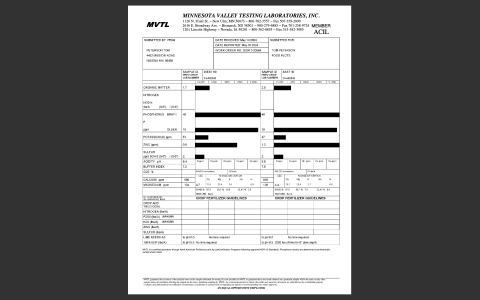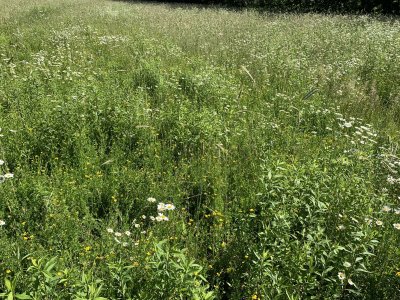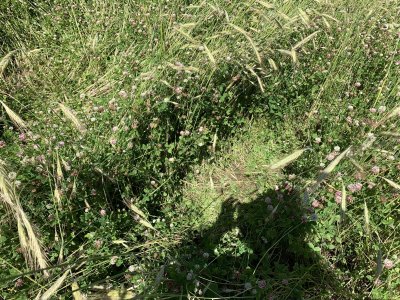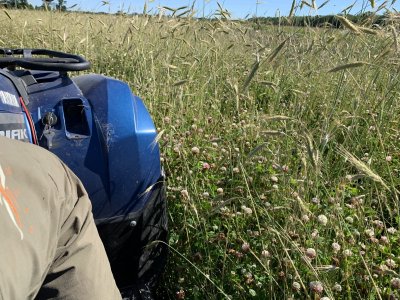-
If you are posting pictures, and they aren't posting in the correct orientation, please flush your browser cache and try again.
Edge
Safari/iOS
Chrome
You are using an out of date browser. It may not display this or other websites correctly.
You should upgrade or use an alternative browser.
You should upgrade or use an alternative browser.
Starting Over.
- Thread starter Foggy47
- Start date
Tree Spud
5 year old buck +
Part of my issue....is that I stay in AZ until mid May. Frost seeding wont work for me. I need that clover under the rye to help keep weeds at bay. Didn't want to go back to soybeans. Kinda surprised by my poor results this year.
Then you could broadcast the clover in the fall. Just spread 6 weeks before the 1st killing frost to make sure roots have established.
Foggy47
5 year old buck +
^ That is what I have done the past few falls......and where I find myself now (but with a drill instead of broadcasting).Then you could broadcast the clover in the fall. Just spread 6 weeks before the 1st killing frost to make sure roots have established.
Been thinking.......and may disconnect those seed tubes from the drill's small seed box next fall and simply deposit the seeds on the ground rather than the seed trench. The openers create a little disturbance to the ground and the press wheels will push the seeds into contact with the soil. I know there are folks that operate their drill in such fashion.
Also, Great Plains does offer an alternate orientation for the drop tube that comes from the small seed box.....where the drop tube places the seed a few inches behind the trench. Maybe that is a better plan than letting those hoses dangle.
Tree Spud
5 year old buck +
^ That is what I have done the past few falls......and where I find myself now (but with a drill instead of broadcasting).
Been thinking.......and may disconnect those seed tubes from the drill's small seed box next fall and simply deposit the seeds on the ground rather than the seed trench. The openers create a little disturbance to the ground and the press wheels will push the seeds into contact with the soil. I know there are folks that operate their drill in such fashion.
Also, Great Plains does offer an alternate orientation for the drop tube that comes from the small seed box.....where the drop tube places the seed a few inches behind the trench. Maybe that is a better plan than letting those hoses dangle.
On most clovers I see recommended planting depth of 1/4" - 1/2". I think that would be a challenge to do and lead to planting to deep. I think your plan above is a god one. I think with clover all you need is good soil contact.
FarmerDan
5 year old buck +
I will be the contrarian. It may be Foggy planted the clover seed too deep, but what's "too deep?" I know, I know. For me it's more than one-inch. It's possible to germinate clover seed planted two inches deep in the right soil under some good conditions.
Clover seed is a funny creation. The smaller the seed the harder the seed coat. A seed coat is Mother Nature's way of preventing germination of the seed until the situation is right. Soil moisture is criticval and I suspect soil temperature plays a part although I've never seen research about the latter. In nature a hard-coat seed will lay in the soil for years and still remain viable.
Commercially, before clovers, alfalfas and some grasses are sold they are processed - cleanrf of weed seed and other inert material. At the same time the seeds are sent thru a process to gently nick the hard seed coat to allow moisture into the germplasm so the growing can begin. It's a very imprecise operation. You might seed a seed tag with a low(er) germination percentage and a fair percentage of hard seed listed, or maybe not. Hard seed is probably going to germinate sooner or later, but probably later because the seed coat remains intact.
In Foggy's situation I am proposing the clover seed is where it should be but hasn't been able to absorb enough moisture to get going. Why? Competition from too much rye. Rye is aggressive, not unlike a weed. Why do we want to get rid of weeds? Because they are aggressive and rob the desired plant of water, nutrients, and oxygen.
Soil is a bucket. It has a limited capacity to hold those things need for plant growth. Too many seeds/plants of what we want will likely diminish or prevent what we are trying to accomplish. The good news, I guess, is all that clover seed is maybe sitting there waiting for some of the competition to clear. A given land area can support only so much vegetation.
Or, maybe the clover seed got planted too deep.
Clover seed is a funny creation. The smaller the seed the harder the seed coat. A seed coat is Mother Nature's way of preventing germination of the seed until the situation is right. Soil moisture is criticval and I suspect soil temperature plays a part although I've never seen research about the latter. In nature a hard-coat seed will lay in the soil for years and still remain viable.
Commercially, before clovers, alfalfas and some grasses are sold they are processed - cleanrf of weed seed and other inert material. At the same time the seeds are sent thru a process to gently nick the hard seed coat to allow moisture into the germplasm so the growing can begin. It's a very imprecise operation. You might seed a seed tag with a low(er) germination percentage and a fair percentage of hard seed listed, or maybe not. Hard seed is probably going to germinate sooner or later, but probably later because the seed coat remains intact.
In Foggy's situation I am proposing the clover seed is where it should be but hasn't been able to absorb enough moisture to get going. Why? Competition from too much rye. Rye is aggressive, not unlike a weed. Why do we want to get rid of weeds? Because they are aggressive and rob the desired plant of water, nutrients, and oxygen.
Soil is a bucket. It has a limited capacity to hold those things need for plant growth. Too many seeds/plants of what we want will likely diminish or prevent what we are trying to accomplish. The good news, I guess, is all that clover seed is maybe sitting there waiting for some of the competition to clear. A given land area can support only so much vegetation.
Or, maybe the clover seed got planted too deep.
Foggy47
5 year old buck +
Thanks for your valuable comments Dan. I appreciate the thought that goes into your posts.I will be the contrarian. It may be Foggy planted the clover seed too deep, but what's "too deep?" I know, I know. For me it's more than one-inch. It's possible to germinate clover seed planted two inches deep in the right soil under some good conditions.
Clover seed is a funny creation. The smaller the seed the harder the seed coat. A seed coat is Mother Nature's way of preventing germination of the seed until the situation is right. Soil moisture is criticval and I suspect soil temperature plays a part although I've never seen research about the latter. In nature a hard-coat seed will lay in the soil for years and still remain viable.
Commercially, before clovers, alfalfas and some grasses are sold they are processed - cleanrf of weed seed and other inert material. At the same time the seeds are sent thru a process to gently nick the hard seed coat to allow moisture into the germplasm so the growing can begin. It's a very imprecise operation. You might seed a seed tag with a low(er) germination percentage and a fair percentage of hard seed listed, or maybe not. Hard seed is probably going to germinate sooner or later, but probably later because the seed coat remains intact.
In Foggy's situation I am proposing the clover seed is where it should be but hasn't been able to absorb enough moisture to get going. Why? Competition from too much rye. Rye is aggressive, not unlike a weed. Why do we want to get rid of weeds? Because they are aggressive and rob the desired plant of water, nutrients, and oxygen.
ut
Soil is a bucket. It has a limited capacity to hold those things need for plant growth. Too many seeds/plants of what we want will likely diminish or prevent what we are trying to accomplish. The good news, I guess, is all that clover seed is maybe sitting there waiting for some of the competition to clear. A given land area can support only so much vegetation.
Or, maybe the clover seed got planted too deep.
Spent some time searching and reading Great Plains material this morning. They do have two ways to mount that small seed box tube.....and they RECOMMEND orienting the tube to be positioned behind the seed trench......which is almost like broadcasting it in front of the press wheel.
My drill is used....and it came to me with this tube oriented to drop the seeds in the trench but behind the main seed box drop tubes......so the seeds thus deposited are not "too deep" into the seed trench when I plant my rye. I plant the rye at about and inch deep and as a pure guess....I would say the clover seeds are about 1/2 " deep with the setup I now am using.
Is that "too deep" I don't know. It has worked for me in the past.....but it definitely is suspect. I have light sandy soil and have had excellent moisture last fall and this spring......so I do not think the seed coat issue is "real" in my situation. But I am always willing to learn.
I am going to look at similar drills on the dealers lot(s) and see which way they orient those small seed tubes. The more I read ....the more I am inclined to change my drill to drop the seed behind the seed trench. It's only an hour's job (tops) to do the change. But I do not like to go "willy nilly" with changes until I feel certain I will get a result.
Also, this may be worth a call to talk to one of the tech's at Great Plains for their take on this issue.
What say some of the other guys with a Great Plains drill. Where is your small seed box dropping the seeds? In the trench or behind the trench?
Last edited:
SD51555
5 year old buck +
Having zero come up is what is so puzzling. A poor stand is a completely different situation from no stand whatsoever. If it weren't for the journey @Foggy47 has already been on, I'd would recommend discing up a strip to see what happens. If it's too deep, a bunch of it should come up and germinate. Having just gotten the pigweed and hawkweed under control, I wouldn't break the ground though.
Foggy47
5 year old buck +
Maybe try a rescue seeding of white sweet clover? You could still get a bunch of clover out of that this season
Yeah.....I'm going to try to formulate a plan real quickly for this summer. I have to go to a funeral on Tuesday....and will go through St. Clould where I can get some replacement seeds at decent prices (Mimbach Farm Supply). I do have lots of MRC, Alice White Clover, Crimson Clover, GHR, as well as a mix of brassica seeds. I think white sweet clover is pretty inexpensive and will read up on it.Maybe try a rescue seeding of white sweet clover? You could still get a bunch of clover out of that this season.
The area I prep for the brassica will be nearly two acres and I have a great blend ready to go. I will either nuke that area and drill the brassica in. Gonna stay away from the disk I think.
The good thing this year is that we are getting plentiful rains on a regular basis. Just got 3" a day ago.....and have gotten periodic rains all spring / summer thus far. The drought cycle seems to have been broke.
It is puzzling on my planting from last fall. Makes life interesting. grin.
Last edited:
Wind Gypsy
5 year old buck +
Wind Gypsy
5 year old buck +
The top picture where only daisy fleabane, oxeye daisy, goldenrod, birdsfoot trefoil, and nary a plant from seed i chose is visible?commiserate?
I would kill for that result^^^^^
bill
Main point was some areas look awesome, some are only 98% "weeds" and all were treated the same so I don't have a solid answer for why and how.
matinc
5 year old buck +
I will be up north this weekend to see how my clover and rye patches did. Gonna use the new roller crimper and try buckwheat alone and cc6. Will send pictures later to the group for observation. Bought an 80 pound forward facing seeder for the atv to plant so none of that walking finding tick thing.
SD51555
5 year old buck +
I like fleabane. I introduced trefoil. The bees seem to really rely on goldenrod later in the growing season.The top picture where only daisy fleabane, oxeye daisy, goldenrod, birdsfoot trefoil, and nary a plant from seed i chose is visible?
Main point was some areas look awesome, some are only 98% "weeds" and all were treated the same so I don't have a solid answer for why and how.
The oxeye daisy is gonna be one to watch. I've seen my neighbors field blow up in daisy nearly every year, and most years, I don't think they ever cut it because all they'd bail is daisy and hawkweed. I'm curious to see if I'm going to be stuck with it, or if the deer grazing is gonna be enough to move the system past daisy.
TreeDaddy
5 year old buck +
.......with bees?If it persists, I'll have to blast it with gypsum and some heavy concentrated grazing tactics.
bill
SD51555
5 year old buck +
Deer and bear........with bees?
bill
RGrizzzz
Administrator
If you're going to spray it, I'll suggest 24DB, instead of 24D. That should nuke most broadleaf weeds, but not the clover. I'd vote against disking it, unless you can share a compelling reason, like soil crusting.
Also, is there a difference in the soil in the various locations? pH? Fertilization? Moisture? Etc. I'm a regen fan too, but I've noticed some of my plots do better than others, and it's likely due to the soil. You can let nature do its thing on its own timeline, or potentially help speed it up with things like lime, occasional spraying, etc.
Also, is there a difference in the soil in the various locations? pH? Fertilization? Moisture? Etc. I'm a regen fan too, but I've noticed some of my plots do better than others, and it's likely due to the soil. You can let nature do its thing on its own timeline, or potentially help speed it up with things like lime, occasional spraying, etc.
S.T.Fanatic
5 year old buck +
Pull a soil sample and find out what your calcium to magnesium ratio is.
Ideally you would like to see 60 to 75% for calcium, 10 to 20% for magnesium.
Most of us overlook the benefits soil samples can tell us and simply try to rely on chemicals or tillage.
Sent from my iPhone using Tapatalk
Ideally you would like to see 60 to 75% for calcium, 10 to 20% for magnesium.
Most of us overlook the benefits soil samples can tell us and simply try to rely on chemicals or tillage.
Sent from my iPhone using Tapatalk
Foggy47
5 year old buck +
Pulled samples in May.Pull a soil sample and find out what your calcium to magnesium ratio is.
Ideally you would like to see 60 to 75% for calcium, 10 to 20% for magnesium.
Most of us overlook the benefits soil samples can tell us and simply try to rely on chemicals or tillage.
Sent from my iPhone using Tapatalk
Calcium is 690ppm and 73.7% base saturation
Magnesum is 134ppm and 23.5% base saturation
PH runs in the low 6's
Organic matter is about 2
I'm 87% sand here.




